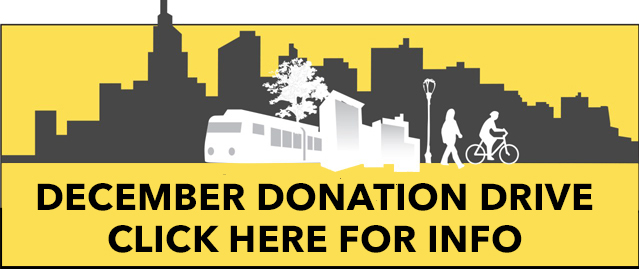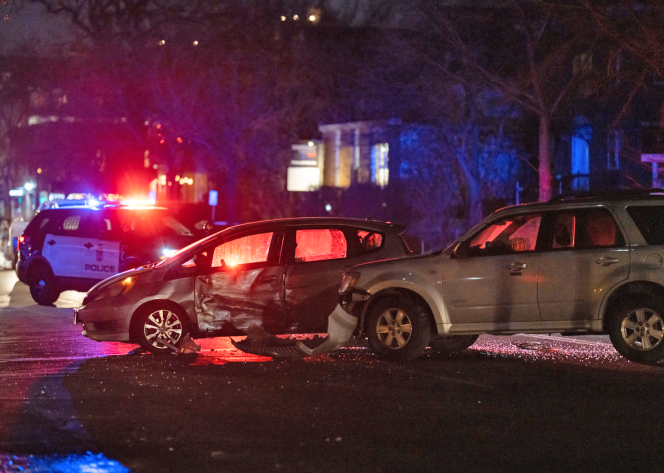
The New York Times jumped into the ongoing conversation about why American road deaths are so rapidly outpacing the rest of the industrialized world — but the scratch-the-surface approach left a lot of causes and solutions on the table.
Journalists Emily Badger and Alicia Parlapiano's deep dive on America's skyrocketing traffic violence crisis centered on our nation's 5-percent spike in car crash deaths during the Covid quarantine — a rise that came as other nations' fatality rates plunged. (And before the trolls try to downplay the Times's numbers, the paper was absolutely right to compare fatalities based on deaths per capita rather than deaths per mile, or per vehicle on U.S. roads.)
If sprawl forces us to drive 100% more, with crash deaths rising 50%, would you say we’re now “safer”?
— David Zipper (@DavidZipper) November 27, 2022
If not, you now understand why deaths per capita is the crash metric that matters. https://t.co/jn4XNrWVrz
And that trend long predated the pandemic — particularly among pedestrians and cyclists. People who walk and roll died 19 and 17 percent more, respectively, in 2020 than they did in 1994, while vehicle passenger deaths declined a whopping 42 percent over the same period.
We're not the only country with alcohol, smartphones or distraction. We're not the only country impacted by the worldwide pandemic. Other countries designed transportation systems where human emotion and error are less likely to produce deadly results.
— Beth Osborne (@BethOsborneT4A) November 27, 2022
https://t.co/exLdvDnf3F
The story was inspired, in part, by a Nov. 19 protest ride in memory of U.S. diplomat Sarah Langkenkamp, who was killed while riding in a painted bike lane last summer. Her husband Dan launched an awareness campaign (including two interviews with Streetsblog) to fund bike infrastructure improvements, mandate side underside guards on trucks, and other policies that might have saved Sarah's life, if only transportation leaders had acted quickly enough.
Here are four more resources for those who want to dig a little deeper into why rising roadway deaths are such an "exceptionally American" problem — and what to do about it.
1. America's 2020 road death numbers were an even bigger disgrace than you think
Perhaps the most buzzed-about revelation from Badger and Parlapiano's article was just how far behind on road safety the United States has fallen during the pandemic — and how safe our peer nations were by contrast. Italy, Hungary, and Turkey, for instance, all cut road deaths by more than a quarter in 2020 when compared to the average for the three years prior, while Canada, which is as sprawling as the U.S., slashed fatalities by 6 percent.
Genuinely shocked at how society is not up in arms and appalled at the pedestrian safety crisis. It's also all over the news, so it's not for lack of information or media coverage. Deaths have increased 62% since 2009. SIXTY-TWO PERCENT.
— Tara Pham (@tarapham) November 29, 2022
Those contrasts, though, are even more dramatic than the Times's analysis suggests. According to an earlier paper based on preliminary 2020 data, national like France and Germany experienced their lowest fatality count in more than 60 years during quarantine, while America recorded its highest fatality count in 16 years.
Put another way: as U.S. roadway deaths rose, many countries' totals didn't just get lower. Their roads got safer than at almost any point in history.
2. There are some surprising reasons why pandemic road deaths spiked
Advocates rightly commended Badger and Parlapiano for laying the blame for America's road death crisis squarely on the shoulders of our structurally unsafe transportation system — rather than the mistakes of individual motorists:
"We are not the only country with alcohol,” said Beth Osborne, director of the advocacy group Transportation for America. “We’re not the only country with smartphones and distraction. We were not the only country impacted by the worldwide pandemic.”
Rather, she said, other countries have designed transportation systems where human emotion and error are less likely to produce deadly results on roadways.
Some experts believe, though, that individual and cultural factors bear some responsibility for America's recent death toll — even if structural fixes are still the best way to address those problems.
A February study of Federal Highway Administration data found, for instance, that the drivers of pick-up trucks and SUVS — aka, the most dangerous vehicles on the road, at least for those not riding inside them — actually drove more during the first year of quarantine than in the year prior, compared to the owners of small cars, who drove 16 percent fewer miles. Surveys have also found that the motorists with the most dangerous habits, like driving drunk, texting behind the wheel, or speeding, were also among the most likely to keep driving in 2020 — and that they freely admitted to doing all those deadly things even more often on pandemic-emptied roads.
Most experts say the solution to both problems isn't scolding individual drivers into picking safer cars and making better choices when they drive them; it's regulating vehicles and the roads they travel along to basically force even the most dangerous motorists to behave better.
3. Big cars and big roads aren't the only reasons the US is so deadly
Urban Institute's Yonah Freemark, whose research on why French and American road death trends have diverged so dramatically since the 2000s, got a lot of airtime in the article. We actually published that research back in July as part of a three-part series on what the U.S. can learn from Europe, and we couldn't agree more with Freemark's statement to the Times that America can no longer afford "a system that allows this incredible abuse."
Among the many solutions that Freemark recommended America steal, though, the Times mostly focused on just two: regulating for smaller cars and designing streets to encourage slower speeds. His other suggestions deserve their own mentions: namely, actually enforcing the speed limits on those slow streets through automated cameras, taxing the drivers of needlessly heavy vehicles when they insist on entering city centers, and creating completely car-free areas throughout those downtowns, particularly near schools.
4. Federal barriers to street safety are sky high — which is why we must dismantle them
Badger and Parlapiano rightly pointed out that the federal government is taking "modest" steps to quell the bloodshed on U.S. roads — with an emphasis on "modest."
What the article didn't detail, though, is how the increased funding for road safety will be dwarfed by even-more-increased funding for autocentric roads— or how GOP leaders have already told state DOTs to disregard the Federal Highway Administartion's pleas to use those dollars for repair and safe redesigns rather than expansion, which will only drive deaths up more.
There's a massive movement underway to reform America's structurally unsafe transportation system at every level, including requiring state DOTs to fix deadly roads before they build new ones and making sure cities get the funding they need to prioritize the most vulnerable road users.






